How AI is shaping brand perception, and what you can do about it

What does ChatGPT say about your brand? As AI agents emerge alongside traditional search engines as the starting point of discovery, the way they perceive and present your brand can directly shape customer trust and buying decisions. These models don’t know your brand the way people do. They learn it from the web, from structured data, citations, reviews, and the context you’ve built across digital touchpoints. The result: AI isn’t just reflecting your brand; it’s actively influencing how audiences experience it!
This article explores how AI is reshaping brand perception and, more importantly, what you can do about it.
Key takeaways
- AI shapes brand perception through interpretation, rather than mere recognition, utilizing technologies such as knowledge graphs and sentiment analysis
- The shift from traditional search engines to AI-driven discovery alters how brands are discovered and understood by consumers
- AI models rely on multiple factors, including structured data, citations, and consistency, to build brand profiles
- Brands can influence their AI representation by continuously auditing how AI describes them and refreshing key content
- Taking proactive steps in content creation and visibility across various platforms is crucial for maintaining brand equity in the age of AI
How AI perceives your brand
AI doesn’t just read your brand; it interprets it. Instead of scanning isolated keywords, AI systems build a contextual map of who you are, what you offer, and how the world perceives you. This understanding comes from a combination of techniques like knowledge graphs, entity linking, relationship mapping, and sentiment analysis.
Here is a brief overview of different technologies that AI agents use for understanding brands:
Knowledge graphs
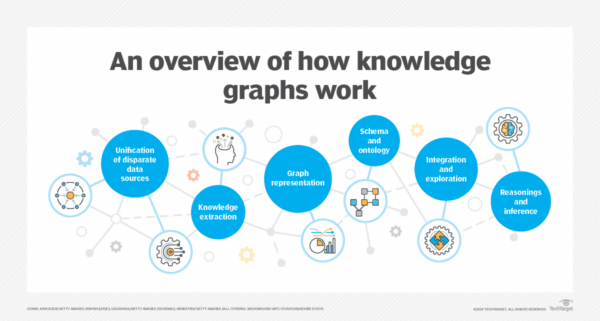
Knowledge graphs are structured databases that represent entities (like brands, products, or people) and the relationships between them. For AI, they serve as a kind of brand blueprint, linking Apple not only to ‘smartphones’ and ‘laptops’ but also to competitors like Samsung, product lines like iPhone, and audiences like ‘tech-savvy young adults.’ By connecting these dots, AI understands a brand’s position within a larger ecosystem.
Entity linking
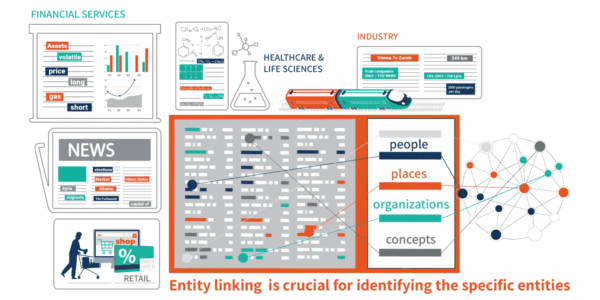
Entity linking ensures that when AI encounters a brand reference – whether in a news article, review, or social post – it knows exactly which brand is being discussed. A mention of ‘Apple’s new iPhone’ doesn’t just get read as text; AI links ‘Apple’ and ‘iPhone’ to their knowledge graph entries, capturing the context that this is about Apple’s smartphone launch, not fruit.
Relationship mapping
Beyond direct links, AI maps relationships between entities to uncover patterns. This could mean identifying which product features resonate with certain customer segments or surfacing how a brand is associated with trends like sustainability or innovation. Relationship mapping highlights not only who is connected to a brand, but how.
Sentiment and perception analysis
AI also analyzes tone and sentiment across reviews, forums, social platforms, and media. These signals reveal whether people talk about a brand positively, negatively, or neutrally, and in what context. Over time, these insights shape how AI interprets a brand’s reputation and credibility.
Personalization and content alignment
Finally, AI uses this brand understanding to personalize consumer interactions and even generate content aligned with a brand’s tone and values. The more consistent the data and signals a brand sends out, the clearer its identity becomes in AI systems.
Taken together, these technologies mean AI doesn’t just see a brand as a logo or a tagline. It sees a web of relationships, perceptions, and behaviors, continuously updated in real time. AI understands brands through both what they say about themselves and how the world engages with them, but it often weighs the latter more heavily.
Overall, if we set aside the technical layers, the bigger picture is this: AI doesn’t see a brand as just a logo, tagline, or marketing claim. Instead, it constructs meaning from the countless interactions, mentions, and connections that exist around the brand. Every review, conversation, and association adds another layer to how AI perceives brand equity.
Your brand’s story was never yours alone; customers, communities, and competitors have always shaped it. What’s changing is that AI amplifies those influences in real time.
The new gatekeepers: LLMs & generative search
For decades, search has been the front door of the internet, the place where customers first discovered, compared, and connected with brands. Ranking high on Google meant visibility, trust, and traffic, and much of the brand strategy was built around that dynamic. But that front door is changing.
Today, large language models (LLMs) and generative AI are reshaping discovery itself. Search is no longer just a list of blue links you can optimize against. Instead, AI compresses, summarizes, and reinterprets content on behalf of the user. It’s faster, more convenient, and increasingly becoming the default way people search.
In fact, by 2028, organic search traffic could decline by 50% or more as consumers rely more heavily on generative AI-powered search.
This shift marks a turning point: discovery is moving from traditional search engines toward AI-driven experiences. And nowhere is this transformation clearer than in the evolution of search engines themselves.
Read more: LLM SEO optimization techniques (including llms.txt)
Let’s understand this shift and its different aspects in detail.
From traditional search to AI-driven discovery
In the pre-AI era, search meant competing for blue links. Your content carries not just keywords but also your voice, tone, and brand identity. That visibility gave businesses some control over how they were discovered.
Now, discovery is expanding beyond links into AI-generated answers, instant summaries, and conversational results. These systems don’t just point to your site; they synthesize information from multiple sources and deliver it directly to the user.
This shift means people are no longer ‘clicking through’ in the same way; they’re expecting instant, conversational results. It’s faster, more convenient, and quickly becoming the default search experience.
Search engines’ evolution into generative platforms
Search engines themselves are fuelling this transition. Google is the clearest example. It remains the dominant force in search, with usage rising more than 20% in 2024 and still delivering ~373X more searches than ChatGPT. But the nature of that search is changing.
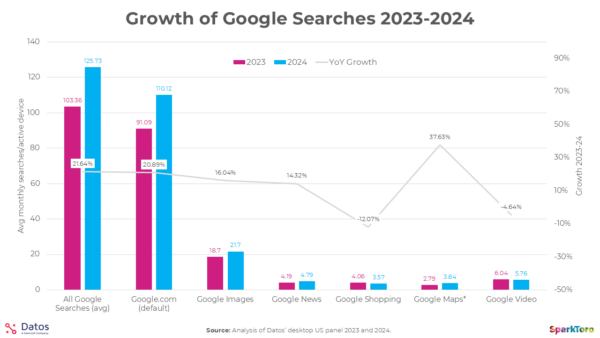
- AI Overviews, launched in May 2024, now appear in more than half of searches. Instead of users scrolling down to organic results, they see synthesized AI summaries right at the top.
- AI Mode, rolling out widely in 2025, makes the entire experience conversational, with generative responses as the default surface, not the list of links below.
- Behind all of this is Gemini, the model family that deepens Google’s ability to parse context, language, and intent, reshaping what it means for content to be ‘visible.’
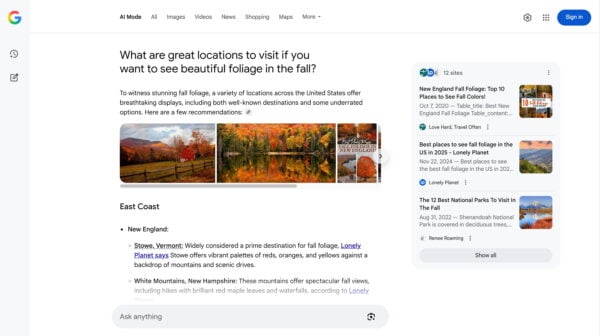
For brands, this creates a paradox. Your content may be seen more often through impressions, but clicks decline because users often don’t need to leave the search results page. Instead of optimizing just for rankings, success depends on whether your content can deliver highly specific, immediately useful insights that AI wants to pull into its answers.
Recognizing this shift early opens up space to differentiate, while many competitors are still optimizing for the old playbook.
Read more: How to optimize content for AI LLM comprehension using Yoast’s tools
The branding challenges of AI mediation
While generative search improves user experience, it strips away brand nuance. AI blends multiple sources, compresses messaging, and removes design and visual branding, leading to tone flattening. A playful coffee brand known for witty puns and bold design may simply appear as ‘a coffee retailer offering various blends’. Stripped of its energy and personality.
There’s also the problem of sentiment drift. Because models rely on historical data, they may surface outdated or dominant narratives that don’t reflect your current positioning. A hotel that has rebranded into a luxury wellness retreat may still show up as ‘a budget accommodation option,’ simply because older reviews carry more weight in training data.
The risk here is bigger than being misrepresented; it’s being misunderstood at scale. In the AI-driven discovery era, your brand isn’t just competing for attention; it’s competing for interpretation.
Read more: What AI gets wrong about your site, and why it’s not your fault
What shapes your brand’s AI profile
AI agents build brand profiles not just from your owned content but from the network of signals surrounding it, some of which you can influence directly, others that linger long after you’ve moved on.
Everything mentioned till now clearly shows that AI agents’ answers for your brand depend on several factors, like:
- Structured data and schema usage provide machines with a clear blueprint of who you are, what you offer, and why it matters. Without this scaffolding, your content risks being flattened into something indistinguishable.
- Citations in authoritative sources act like trust anchors. When established publications, industry bodies, or credible researchers reference your brand, AI models absorb those signals and treat them as validation.
- Consistency of context, making sure your brand name, description, and expertise align across platforms, ensures that fragmented or contradictory mentions don’t dilute your identity in AI summaries.
- Depth and authority of content matter more than sheer volume. AI is tuned to favor content that demonstrates expertise and perspective, not just keyword density.
- Geographical and personalization cues influence how your brand is profiled in specific markets or for specific user types. For instance, a brand may appear as a local leader in one geography and an emerging player in another.
Reputation signals like reviews, press coverage, and forum discussions shape how AI remembers your brand. Unlike a campaign you can sunset, these signals persist in training data.A software tool that fixed its early bugs, for example, might still be labelled unreliable in AI-generated summaries because forum complaints from years ago remain part of the record.
Together, these factors reveal an uncomfortable truth: your brand’s AI profile is not solely in your control. It is co-authored by every structured markup, citation, review, and discussion thread tied to your name.
And that’s exactly why the next step isn’t just about visibility, it’s about equity. If machines are going to carry your reputation forward, then the real question becomes: how do you actively shape and protect that equity in the AI era?
What you can do about it: building brand equity in the AI era
If AI is going to summarize your brand for users, the challenge is no longer just getting to page one; it’s making sure those summaries capture the right story. That means shifting your strategy from chasing rankings to actively shaping the signals AI pulls from.
Here’s how to start:
Audit how AI describes your brand
Don’t assume your website is the only source AI is pulling from. Ask an AI model like ChatGPT to ‘Describe [Your Brand]’ every quarter. Track how those descriptions change, whether they reflect your current positioning, and if old baggage is still showing up. This gives you a baseline for what’s working and what needs fixing.
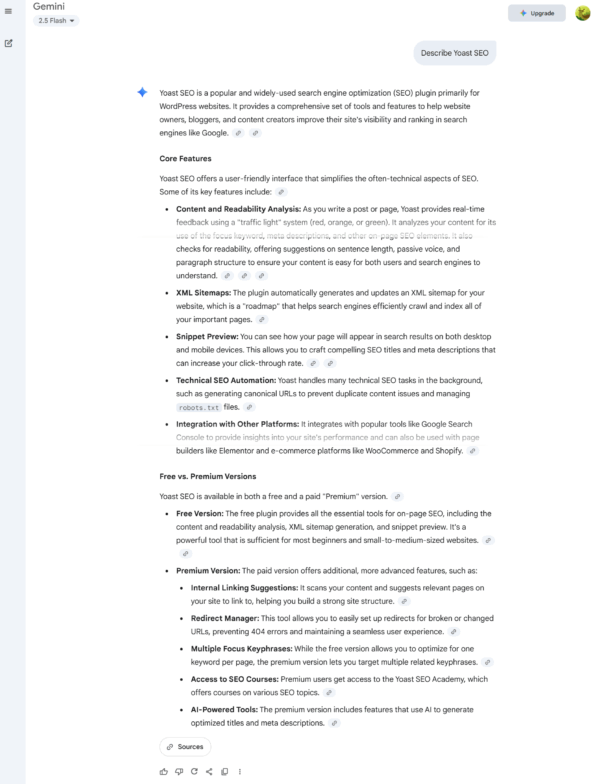
With our all-new Yoast AI+, you get access to Yoast Brand Insights. It helps you run thorough audits, track mentions, and understand your brand’s visibility across AI assistants. This way, you can see exactly how your brand is represented and take control of the narrative.
See how visible your brand is in AI search
Track mentions, sentiment, and AI visibility. With AI Brand Insights and Yoast SEO AI+, you can start monitoring and improving your performance.
Keep ‘anchor’ content fresh
Pages like your About, product introductions, and service overviews are disproportionately influential. Refresh them regularly with clear, keyword-rich descriptors that reinforce your current narrative. These are often the first things AI models latch onto, so make sure they reflect today’s positioning, not yesterday’s.
Infuse brand storytelling into content
Generic descriptions fade in summaries; unique stories stick. Instead of ‘We sell camping gear,’ write ‘We help families turn weekends into campfire stories.’ Language that’s memorable, metaphorical, or emotionally charged has a better chance of surviving AI compression and carrying your brand identity with it.
Experiment beyond traditional blog posts
AI models ingest more than just written blogs. Case studies, explainer videos, podcasts, interviews, or even forum contributions can influence how your expertise gets profiled. A varied content mix increases the likelihood that your brand is represented in different contexts and query types.
Work on visibility across multiple touchpoints
Don’t let your footprint be limited to your own site. Citations in industry publications, guest appearances, reviews, and even thoughtful participation in online discussions expand the sources AI relies on. The broader your presence, the harder it is for AI to miss you.
Always think about intent and context
AI-powered discovery isn’t keyword stuffing; instead, it’s intent recognition. Structure your content around the problems your audience is trying to solve, not just the queries you want to rank for. When your answers consistently match user intent, AI is more likely to position you as relevant and authoritative.
Invest in tools that guide AI to your brand
Unlike search engines, AI tools don’t crawl your full site; they only scan small pieces of content in real time. This means important details can be missed or outdated. That’s where Yoast SEO’s llms.txt feature helps.
This feature automatically creates a file that acts as a map for AI assistants, pointing them to your most important, cleanly structured content. No setup required. By doing this, you give LLMs a better chance of representing your business accurately in their answers.
The future of brand perception
We’ve entered a new era of discovery. Customers aren’t just scanning pages; they’re trusting AI-generated answers to shape their perception of your brand. That shift comes with both risk and opportunity.
On one hand, AI assistants can strip away the nuance, tone, and ownership brands that brands once held over how they’re presented. On the other hand, they offer a chance to reach audiences in more natural, context-rich ways than ever before, if you prepare for it.
The path forward isn’t just about chasing rankings. It’s about ensuring your brand is understood, accurately represented, and consistently visible across this new AI-powered landscape. That means building content that survives summarization, experimenting beyond traditional formats, and guiding AI to the information that matters most about you.
However, awareness is only the first step; you also need visibility into how AI tools currently describe and interpret your brand.
That’s where Yoast AI+ comes in. It offers AI visibility scores, sentiment tracking, and real-time monitoring of mentions across Gen AI models like ChatGPT and Perplexity. You’ll finally have a clear picture of how your brand lives inside AI answers, and how to shape it.
The future of brand perception isn’t written by you alone. It’s written by the AI that your customers trust. The question is: will you leave that story to chance, or take control of it?

